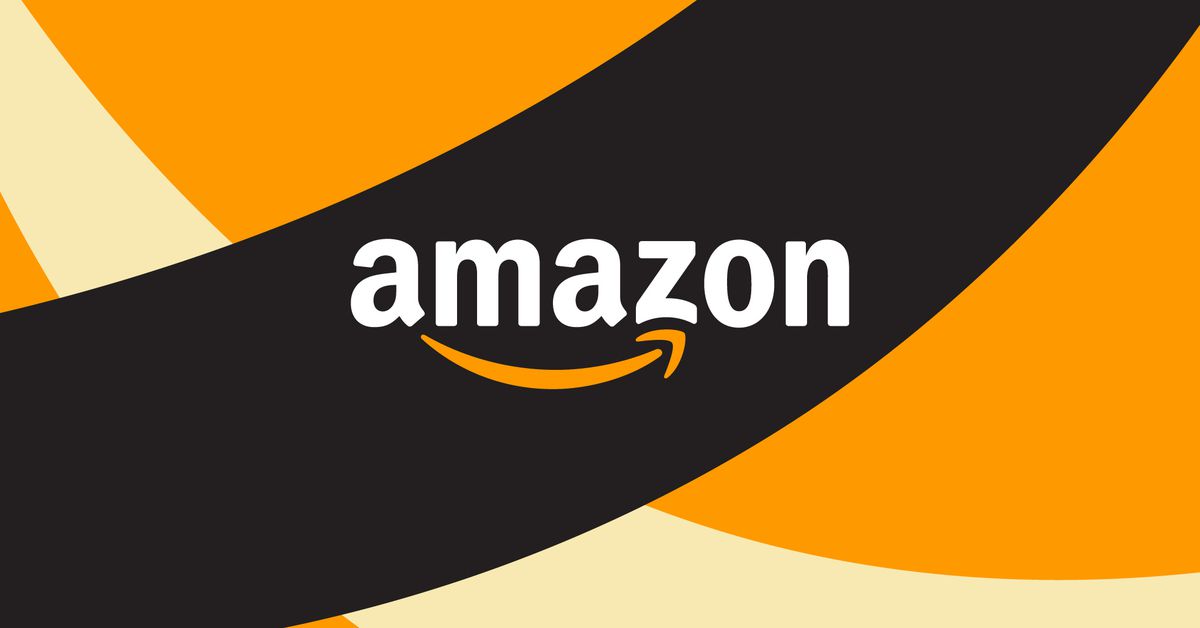Amazon reportedly used a secret algorithm to jack up prices — A new report details Amazon’s Project Nessie pricing algorithm::Amazon deployed a secret algorithm to gauge how high it could raise prices before its competitors stopped increasing their prices as well.
Use Keepa or CamelCamelCamel to see the price history of the item you want to buy.
YSK this data is not entirely accurate. It relies entirely on Amazon’s API, which has been problematic in the past.
Still a useful tool, nonetheless.
That API you are describing is not active anymore. Hasn’t been in a long time.
Keepa has to scrape Amazon data themselves.
in Slovakia there is an aggregator site where stores can publish the stuff they are selling and the price it automatically keeps track.
well the smartwatch I have despite being in Slovakia shut up to 250 euros a month before Black Friday, then magically was many percentages off for 150.
of course the aggregator site showed that it was 150 for the whole year other than that “random” jump before black Friday
edit: found a screenshot, side-by-side with a store that’s not listed on the aggregator:
Not sure if it’s just me but when looking at that in chrome on my phone the picture looks quite blurry and it’s hard to make out much. Doesn’t help that there doesn’t seem to be a way to full screen it.
Load the page on desktop mode then click on the image. imgr is owned by reddit, so it’s been fully enshitified as well.
Thanks. Worked perfectly.
It’s exactly the same case for me.
If you are on android you can try the eternity app for lemmy. It works very well.
Amazon owns camelcamelcamel
Proof?
Ah I am incorrect. I was thinking of woot. Though they did shut down during the pandemic at Amazon’s request
Yeah ever since then CCC has felt sort of unreliable to me. If they’re willing to let Amazon tell them what data they can show once, they’re willing to do it again. Maybe they’re even doing it on an ongoing basis.
A “secret” algorithm. Unlike all those other companies that just publish their proprietary algorithms on the net for anyone to try and game.
My poor eyes are exhausted from all the rolling.
I guess “secret” in the sense that not only the internals of the algorithm, but even the existence of the it is not quite public knowledge.
This is news? I know that gas stations specifically have been doing it forever.
Surely every company makes decisions on how best to increase income, that’s a pretty significant part of being a business.
Right? Amazon’s monopoly is definitely a problem but this part feels pretty par for course. Finding the sweet spot between price/competition/demand is like business fundamentals 101. I can assure you this is something all major retailers consider. There are also many analytics companies with their own “secret” algorithms (this probably just means proprietary?) focused on things things like pricing elasticity and optimization and are targeted to these retailers.
deleted by creator
Iirc there was a guy in an iama last year where the guy tracked prices for plane tickets and found that there wasn’t any “demand-based” pricing.
I’m fairly sure he was debunked though. My memory is a bit hazy and I refuse to return to Reddit to look for it.
while(amazon_price < GetCompetitorPrice()) { amazon_price += 1; Sleep(kOneHour); }; our_price = GetCompetitorPrice() - 1;”SeCrEt AlGoRiThM!!!1” - The Verge
Oh man, you have some serious AI here!
There is still massive price manipulation on amazon which is why I don’t have a prime account for home or anything on “subscribe and save” any more.
“Subscribe and save” is a scam.
They advertise that you will save 5% by using subscribe and save, but then the price of the item you are buying just happens to go up by 30% on the day they decide to use as the basis for your order, which is not the day you ordered it or the day they pulled it off the shelf. It will occasionally go back down to a normal-ish price, but there will also be random months where it goes up 50% or 100%. I’ve seen $15 case of paper towels go up to $45 some months.
Then they keep prodding you to add more items to get 10% off your entire subscribe and save. I added some items a few weeks ago, got the extra discount percentage, but when they priced my order a few weeks later, the cat food I’ve been getting from them at a pretty stable price suddenly went up in price by the exact amount the extra discount was saving me.
Amazon essentially took the “four square” concept that car dealers use to shift higher costs to an area of the transaction where you are less likely to notice it.
The subscribe and save price reflects the listing price at the time your order is fulfilled.
As a seller, the number of subscriptions evaporates if I increase the price on an item.
What you are describing is not a tactic any business is intentionally employing. It’s more likely born of incompetence.
That may be the case, but I have to admit, assuming malice is a lot more fun!
That’s why I micromanage my subscriptions way before the last day to edit when further change are impossible:
- I always leave at least 5 items with delivery 6 months regularly (to max out 15% rebate)
- I always keep an eye on Camel³ and Keepa, local merchants pricing and my previous orders for best price possible (as long as its not over 15% my best price I keep the subscription otherwise I reschedule it to next month, but not skip)
- I skip anything I don’t actually foresee the household needing the next 5 months
- I sometime keep items I need if and only if the best price is from Amazon compared to other local merchants (flyers, in store, online) even though its not a historical best price not even my best price
- “Skip All” if I cannot manage to get a good deal with at least 15% subscribe rebate
Usually I manage to get 7+ different items every month with additional coupons and multibuy rebates (5 for -5%, buy 3 for 6$, etc.).
Last month, surprisingly I somehow managed to combine 60+ items over 14 differents subscription orders all combined and shipped within 5 boxes (3 of them were too heavy to carry alone).
However, this month a can’t seem to find and assemble more than 2 subscription order of regular thing I actualy need. Hence, I may entirely skip November’s delivery.
On top of that, I don’t have/use Prime most of the time. I only pay 2$ for a week of prime whenever a big sale day is upcoming or that there is a exclusive prime only rebates (prime day, black friday, boxing day). Or take the free 30 days trial when available.
Prime is more of a headache for me because Amazon always tries to rush deliver the package with any courrier services they can without ever trying to combine orders. Therefore, we end up having to track multiple different deliveries through multiple different tracking service. Unfortunately, some courriers are regularly terrible at delivering.
In contrast, without Prime, orders tend to take in average over 4+ days before shipping. Enough time to usually combine 3 or more orders in 1 package. And delivered by Amazon’s own delivery truck.
deleted by creator
You should check out CamelCamelCamel or Keepa, it has Amazon price history.
deleted by creator
The 3xCamel works for all these: UK, Germany, France, Italy, Spain, Australia, Canada and US. Sometimes the prices differ for the same products across the EU country versions, so it can be worth comparing them before buying in/from EU.
wow they will make money helping consumerz for now
There is an extention and phone app called Keepa that tracks prices and shows you their price history right on the product page on Amazon so you can see if you are getting a good deal.
This is the best summary I could come up with:
The existence of the algorithm, codenamed Project Nessie, was first revealed late last month in a complaint filed by the Federal Trade Commission accusing the e-commerce giant of violating US antitrust law.
“We once again call on Amazon to move swiftly to remove the redactions and allow the American public to see the full scope of what we allege are their illegal monopolistic practices,” FTC spokesperson Douglas Farrar told the Journal Tuesday.
Project Nessie is just one of many ways the FTC has accused Amazon of illegally maintaining its market dominance in the e-commerce industry.
In the agency’s September complaint, the company is accused of using a variety of methods, like burying listings, to deter sellers from offering products at a lower price on competing platforms.
“The complaint sets forth detailed allegations noting how Amazon is now exploiting its monopoly power to enrich itself while raising prices and degrading service for the tens of millions of American families who shop on its platform and the hundreds of thousands of businesses that rely on Amazon to reach them,” FTC Chair Lina Khan said in a statement last month.
Responding to the suit, Amazon said that the FTC was “wrong on the facts and the law and we look forward to making that case in court.”
The original article contains 322 words, the summary contains 214 words. Saved 34%. I’m a bot and I’m open source!
Well yeah, did you think your landlords were the first to use such algos?
Cunts
“Ooooh, unexpected”
Breaking news! Company tries to find optimal price point.
Target sells cheap, no-name garbage products too?
This is not evidence of a monopoly.
This tactic would only impact Amazon owned listings, which account for a minority of the listings on Amazon.
Amazon does not change prices for listings controlled by third party sellers.
What’s funny to me is that Amazon has a competitive price match policy, where they will hide offers for listings that are priced above other retailers. So the FTC’s argument is that Amazon is trying to drive prices up while also driving prices down.
Isn’t the competitive price match policy a symptom of their monopolistic domination?
Amazon uses its vertically integrated distribution to provide faster shipping. But their marketplace has a higher cut (
5% iircEdit: 15% average). The price match prevents sellers from adjusting Amazon listings to compensate for those fees, forcing the decision to (a) sell at lower margin on Amazon, (b) don’t sell on Amazon, or ©, raise the price across all marketplaces to maintain margin.Rather than holding Amazon prices down, it pulls prices on other marketplaces up. It’s an abuse of the inertia of a large customer base to prevent competition by other marketplaces on the basis of a different blend of cost and delivery service.
In my experience, Amazon takes a lower cut than retail chains. In fact, Amazon is less expensive than DTC when you factor in advertising costs. In all likelihood, it is not causing anyone to drive up their prices off Amazon.
I work with many many brands. I have seen several turn off their DTC channels because customer acquisition costs are simply too high.
The competitive price match policy is a nuisance when retailers liquidate inventory for pennies in the dollar.







